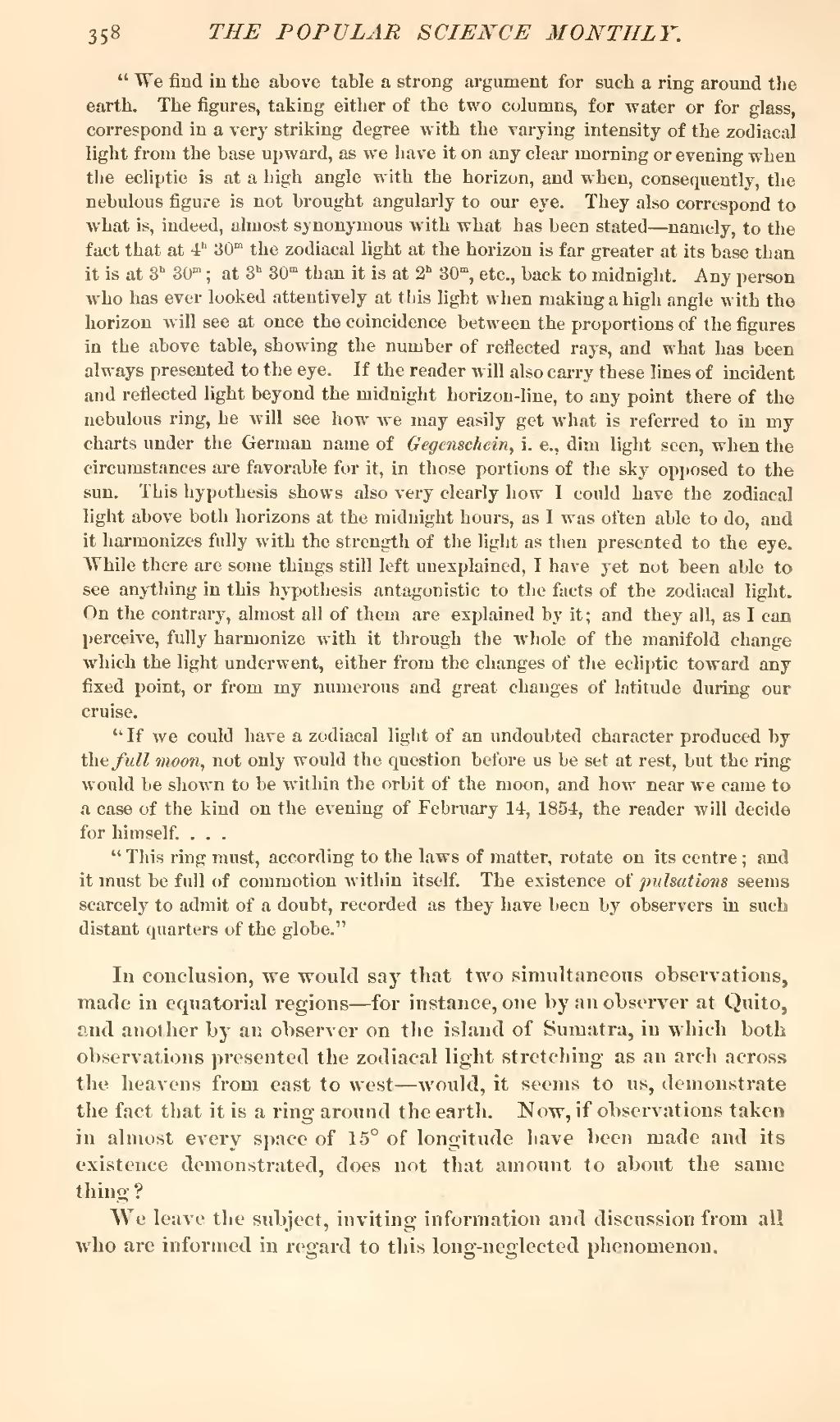"We find in the above table a strong argument for such a ring around the earth. The figures, taking either of the two columns, for water or for glass, correspond in a very striking degree with the varying intensity of the zodiacal light from the base upward, as we have it on any clear morning or evening when the ecliptic is at a high angle with the horizon, and when, consequently, the nebulous figure is not brought angularly to our eye. They also correspond to what is, indeed, almost synonymous with what has been stated—namely, to the fact that at 4h 30m the zodiacal light at the horizon is far greater at its base than it is at 3h 30m; at 3h 30m than it is at 2h 30m, etc., back to midnight. Any person who has ever looked attentively at this light when making a high angle with the horizon will see at once the coincidence between the proportions of the figures in the above table, showing the number of reflected rays, and what has been always presented to the eye. If the reader will also carry these lines of incident and reflected light beyond the midnight horizon-line, to any point there of the nebulous ring, he will see how we may easily get what is referred to in my charts under the German name of Gegenschein, i. e., dim light seen, when the circumstances are favorable for it, in those portions of the sky opposed to the sun. This hypothesis shows also very clearly how I could have the zodiacal light above both horizons at the midnight hours, as I was often able to do, and it harmonizes fully with the strength of the light as then presented to the eye. While there are some things still left unexplained, I have yet not been able to see anything in this hypothesis antagonistic to the facts of the zodiacal light. On the contrary, almost all of them are explained by it; and they all, as I can perceive, fully harmonize with it through the whole of the manifold change which the light underwent, either from the changes of the ecliptic toward any fixed point, or from my numerous and great changes of latitude during our cruise.
"If we could have a zodiacal light of an undoubted character produced by the full moon, not only would the question before us be set at rest, but the ring would be shown to be within the orbit of the moon, and how near we came to a case of the kind on the evening of February 14, 1854, the reader will decide for himself. . . .
"This ring must, according to the laws of matter, rotate on its centre; and it must be full of commotion within itself. The existence of pulsations seems scarcely to admit of a doubt, recorded as they have been by observers in such distant quarters of the globe."
In conclusion, we would say that two simultaneous observations, made in equatorial regions—for instance, one by an observer at Quito, and another by an observer on the island of Sumatra, in which both observations presented the zodiacal light stretching as an arch across the heavens from east to west—would, it seems to us, demonstrate the fact that it is a ring around the earth. Now, if observations taken in almost every space of 15° of longitude have been made and its existence demonstrated, does not that amount to about the same thing?
We leave the subject, inviting information and discussion from all who are informed in regard to this long-neglected phenomenon.
